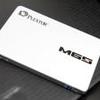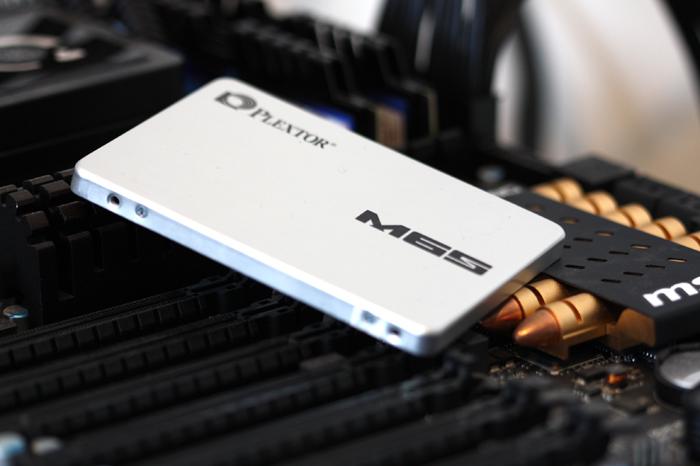Final words and conclusion
Final words and conclusion
Plextor wanted to release an SSD that is more competitive in price and performance than what is available on a saturated market. When you focus a little closer on performance you can see that this SSD sits at Samsungs 840 EVO performance levels, and sure, it's there quite comfortably. That in essence seems to be what Plextor is aiming at. Seriously, Samsung is cluster-fracking the entire market by pretty much designing SSDs that are 98% build by themselves, as such they can keep prices low and volume high. Micron (Crucial) is doing the very same thing. The M6S is Plextor's answer to their products. And quite honestly I am surprised how well this SSD is doing. Sure there will be write performance differences if you take the 128 GB model, but starting at 256GB you will receive an SSD with extremely competitive performance, low power consumption and a very VERY good price. Plextor can keep that price toned down thanks to a very good deal with Toshiba while transitioning the SSDs to 20nm NAND flash memory. It's more cost effective.
Performance
If you place a drive like this into your SATA 3 compatible laptop or SATA 3 compatible PC, you'll have be flabbergasted about performance in general. Especially if you still live in the traditional HDD era. The sustained performance of this SSD series is good, very good even. So if you copy a large amounts of compressed data, then the M6S 256GB will bring a smile to your face in performance. Overall this SSD shines at many factors and on many levels, IOPS performance is fairly good. This SSD is writing and reading serious amounts of tiny files in a very fast fashion (until the cache buffer is full). We stated it before though, IOPS is not something you as a consumer should worry about too much unless you are doing a lot of database related work or create similar workloads on your PC, but this SSD certainly ranks high within this aspect. Trace testing we think is by far one of the best tests in our entire benchmark suite in PCMark Vantage 64-bit. This is a trace test and can emulate what you guys do on your PC but then multiply with factor 100. Sustained read & write performance, again good. Overall I'd sum up the M6S as high-end, not enthusiast class performance. But at 400 MB/sec writes and 500 Mb/sec reads... who can complain, right?
Overall SSD usage
An SSD is enjoyable, very much so. As stated, we very much enjoy the grand overall performance of this SSD series, so when you copy a vast amount of compressed data, then the SSD will perform seriously fast in performance. Make no mistake, replacing an HDD with an SSD in your desktop PC or laptop eliminates the random access lag of the HDD head, it is no longer mechanical. That combined with the performance SATA3 offers these days is simply a massive difference and probably the best upgrade you can make for your computer anno 2014.
SATA Controllers
Some overall recommendations then. Should you be in the market for a SATA 3 SSD then we have a couple of hints. First and foremost if you have a SATA2 controller only on your motherboard, then you'll get limited at roughly 270 MB/sec read and writes. SATA3 (=6Gbps) will free you up from that allowing the SSD to perform in the 500 MB/sec range. It however is important that you connect your SSD towards the proper controller. We absolutely prefer the performance of the Intel Series 6 and 7 (H67/P67/Z68/Z77/H77/X79/Z87/H97/Z97) integrated SATA 6G controller over anything else available in the market. If you run the SSD from a 3rd party controller with say a Marvell 6G motherboard controller, you will see lower performance. The new AMD series 8 and 9 chipsets also offer fantastic performance. The more recent Asmedia controllers we spotted lately on motherboards are also offering good performance, albeit still 20%~25% slower then Intel's controllers. Also make sure you run your drive in AHCI mode, it does make such a difference in performance -- really guys, a big difference. New with H97 and Z97 motherboards is the SATA Express and PCIe M.2. SSD interface. These slots offer even faster bandwidth at 10 Gbps, but do not use the SATA interface. If interested, then be sure to check out one of our articles on that.
Prices HDD versus SSD
First a generic rule that I always apply; you should probably stop looking at the Solid State Disk technology as if it were a traditional HDD. We all will be old and grey before the two reach the same prices or top the multiple TB volume storage the HDD offers for less money. Comparing an SSD with an HDD is making a comparison in-between an integrated IGP or a dedicated graphics card, that last one will cost you a heck of a lot more yet you gain incredible overall performance. It is the very same with an SSD, use it as boot drive on Windows and applications and you instantly have removed a huge bottleneck, namely load and access times. It is a difference in-between night and day (in a proper system). For massive storage like movies, MP3 files and bulky data you do not access on a regular basis, sure that's where the HDD remains the winner as a cheaper storage solution. Guru3D's rule of thumb; the magic is simply finding a good combination in-between the two and balance things out. Use a nice 240GB SSD for your operating system and applications, and park these movies and MP3 files onto a separate TB HDD. That's where the magic happens. I kid you not, all my test systems and work systems run on SSDs, not once have I considered going back to HDDs. The benefits of a good SSD are simply grand. But that doesn't mean I do not understand the budget and cost dilemma that many of you are facing though.
Pricing
As mentioned on the first page of this review, we looked up the street prices at some online etailers here in the EU. Currently all three models are listed. And admittedly, the prices of these SSDs are going to be VERY competitive alright:
- Plextor M6S 128 GB - € 75 / €0,58 GB
- Plextor M6S 256 GB - € 131 / €0,51 GB
- Plextor M6S 512 GB - € 303 / €0,59 GB
Concluding
The M6S is the next logical step for Plextor. Transitioning towards 20nm NAND from Toshiba brings down the prices. The product itself offers very good performance. And sure, a more expensive brand might be 50 MB/sec faster overall, but really at these performance levels you'll be hard-pressed to notice any difference in real-world performance anyway. So performance wise you are set really. When we look at power consumption we again see very small values up-to 0.25 Watt on average. That makes the Plextor M6S also very suited for mobile products, so if you are on the lookout for an upgrade in your laptop, this drive can make all the difference. The final factor is of course pricing, and Plextor is being rather aggressive here. You pay roughly 0.50 to 0.60 (EUR) per gigabyte depending on the model that you purchase, and that is very close to what Samsung is asking for their 840 Evo series. The one series that is even cheaper would be Micron with their Crucial 500 series. We have no hesitation recommending you the Plextor M6S of SSDs. We do suggest the 256GB version over the 128GB model as the larger volume size helps out in write performance. These are good and very fast SSDs at a competitive price level, well done Plextor. We give it our recommended award as it is well deserved.
- Sign up to receive a notice when we publish a new article
- Or go back to Guru3D's front page



